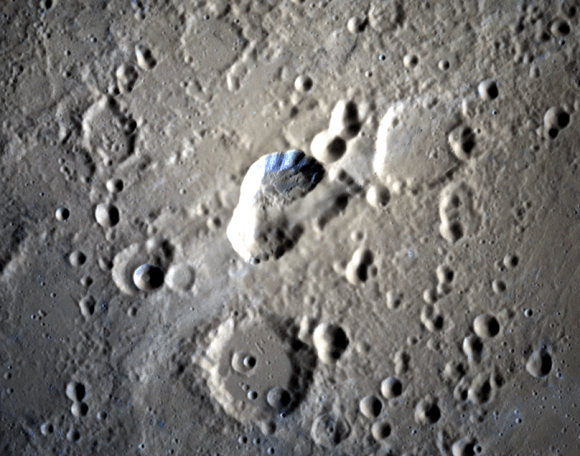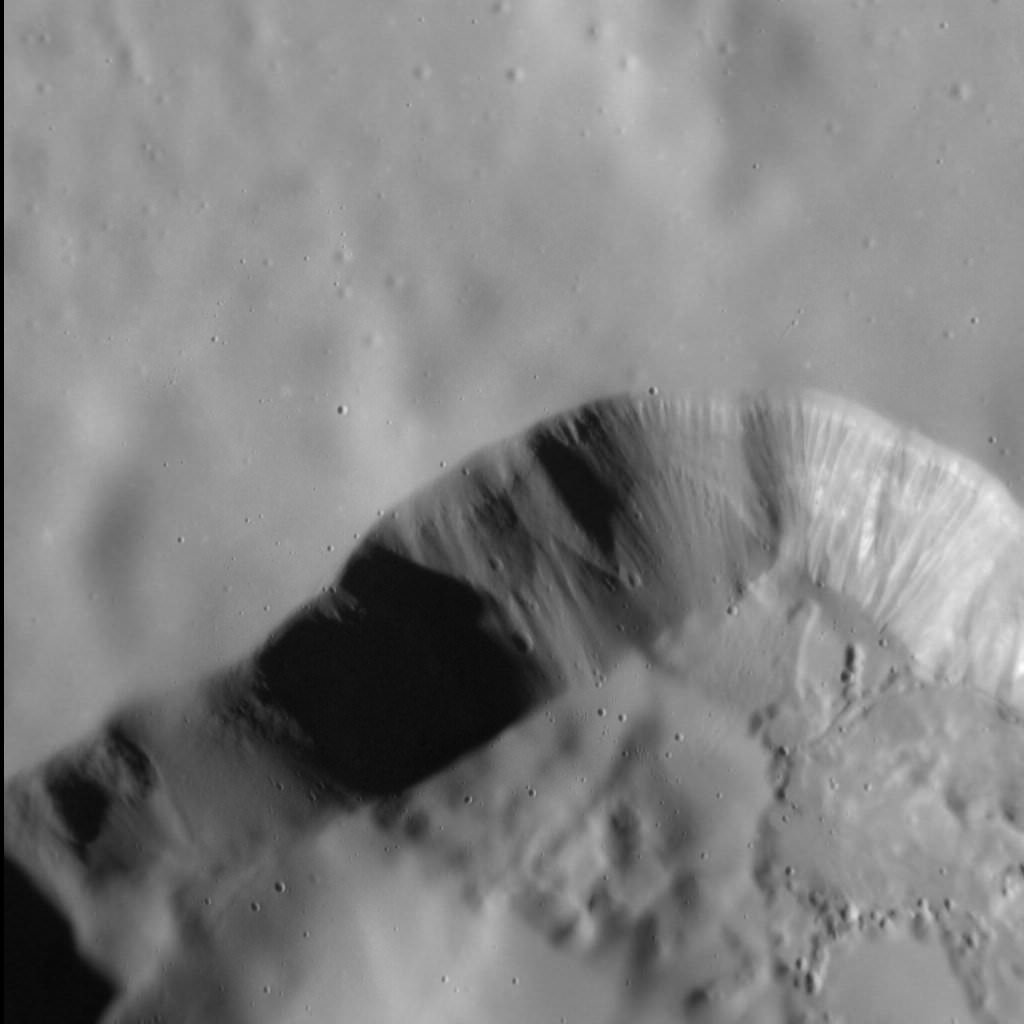During its two years in orbit around Mercury — as well as several more years performing flybys — the MESSENGER spacecraft has taken over 150,000 images of the innermost planet, giving us a look at its incredibly rugged, Sun-scoured surface like never before. But not all areas on Mercury appear so harsh — it has its softer sides too, as seen above in an image released earlier today.
Here we see the smooth walls, floor and upper surfaces around an irregular depression on Mercury in high definition. The velvety texture is the result of widespread layering of fine particles, because unlike many features on Mercury’s ancient surface this rimless depression wasn’t caused by an impact from above but rather explosively escaping lava from below — this is the rim of a volcanic vent, not a crater!
Previous images have been acquired of this irregularly-shaped depression but this is the highest resolution view MESSENGER has captured to date — about 26 meters per pixel.

The full depression, located northeast of the Rachmaninoff basin, is about 36 km (22 miles) across at its widest. It’s surrounded by a smooth blanket of high-reflectance material — explosively ejected volcanic particles from a pyroclastic eruption that spread over the surface like snow.
Other similar vents have been found on Mercury, like this heart-shaped one in Caloris basin. The smooth, bright surface material is a telltale sign of a volcanic outburst, as are the rimless, irregular shapes of the vents.
The numerous small craters that are seen inside the vent and on the smooth surrounding surfaces would be from meteorite impacts that occurred well after the eruption.
On March 17, 2011, MESSENGER became the first spacecraft ever to orbit the planet Mercury. It is capable of continuing orbital operations until early 2015. Find out more about the mission here.
Image credits: NASA/Johns Hopkins University Applied Physics Laboratory/Carnegie Institution of Washington


Why is it shiny? I believe the smooth dust of Mercury is nothing akin to lunar dust.
Difficult to say in general. As on the Moon it should be impact gardened, but the solar wind would be a more dominant mechanism for sputtering and chemical conversion.
And Mercury, with a somewhat different composition than Earth (and so the Moon) would have had volcanic episodes for a longish time. Still ongoing likely, since MESSENGER found an active liquid core. (The Moon core is probably also active, but it is so small today so it doesn’t seem to do much to the surface.)
To sum up, there may have been similar volcanic dust blankets on the Moon but they would be heavily mixed up by now.
It’s probably based on its composition as material that originated from deeper within Mercury’s crust (as opposed to regolith pulverized by micrometeorite impacts) as well as the shape of its particles, which may be quite round since they are rapidly-solidified droplets of lava. Likely contributes to a high level of reflectivity.
Very strange. It is not like what I have imagined
Be trippy for Messenger to see one of those suckers popping off! also quite the serendipitous bonus! The spacecraft DOES have surface spectroscopy instrumentation. (http://www.lpi.usra.edu/meetings/lpsc2013/eposter/1900.pdf) It LOOKS like there has been some mapping of the area – but not at very high resolution?